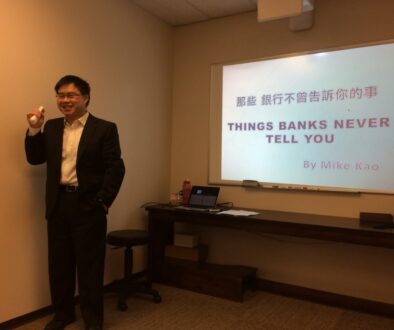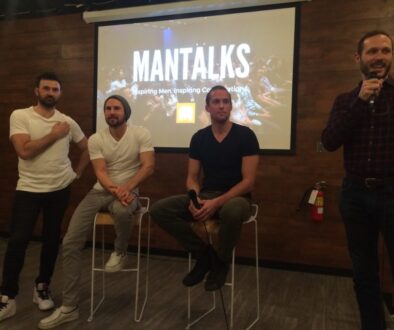3 zero cost strategies to increase marketing effectiveness
Date: July 18, 2017
Name: 3 zero cost strategies to increase marketing effectiveness
Presenters: Rnold Smith, Susan Grieg, and Michelle Falcone
Entrepreneurs have many ways to market their businesses; moreover, it does not matter how much it cost as long as it is effective. The Business Collaboration Network invites Rnold Smith, the Chief Instigator from Instigo, Susan Grieg, the Owner of 100 Braid Street Studio, and Michelle Falcone, the Founder of M-Power Life & Business Coaching, to discuss their effective marketing knowledge in their businesses. All presenters will share their experience in their fields. Furthermore, entrepreneurs will learn their mindset and steps behind their marketing techniques, such as how to getting more attention, generate customers, harness their advantage.
Rnold Smith is the Chief Instigator from Instigo. He is also a speaker, a facilitator, and a trainer to help entrepreneurs exceed their marketing performance. He is also a director in New Westminster Chamber of Commerce. Susan Grieg is the Owner of 100 Braid Street Studios. She is a contemporary landscape painter. Her work has story, which inspire many people. Most of her paintings are hanging in private collections in BC, including BC Children’s Hospital. Michelle Falcone is the Founder of M-Power Life & Business Coaching. She is a Certified Integrative Life and Business Coach. She empowers many people through transformation. Her passion impacts many entrepreneurs.
Marketing that works
Rnold Smith believes one of the big mistakes many entrepreneurs make is that they tend to push marketing to the end because they think it is not urgent. Marketing is about changing behavior and changing behavior is not easy.
If entrepreneurs discover their marketing is not reliably generating all the desirable customers, they usually have these four reasons.
- No clear plan
- The wrong plan
- Wrong message
- Lack of consistent effort
These four reasons allow entrepreneurs to believe marketing takes too much time. They are confused about the next step and they are discouraged by results. Smith believes the key is AIDA, which represents Attention, Interest, Desire, and Action. He shares an interesting statistic: out of all customers, 3% want to buy, 6-7% open to the idea, 30% do not think about it, 30% do not think they are interested, and 30% know they are not interested. The main question is for all entrepreneurs is how to get the other 90%.
To get other 90%, the order goes from “Needs”, “Wants”, “Pleasures”, then “Fears”. Smith refers this as the ladder of persuasion. The key is to get customers’ attention. The best tool is to use curiosity. Needs trigger wants. Entrepreneurs need to make a list of wants for their customers. By asking why on each item on the list, entrepreneurs will discover their inner pleasures. Pleasures will also show fear. Entrepreneurs will now be able to solve their fears to win over their attention.
“Until you get their attention, it is nothing”
The huge mistake that many entrepreneurs make is that they do not use fear in their marketing strategy.
When people ask how entrepreneurs are different than others, many entrepreneurs are answering with the same generic response. In order to distinguish themselves from the competition, they need to use “abstract”. Smith refers this as the ladder of abstraction. It starts with abstract, then less abstract, then lastly concrete. The key is to understand what the target market cares about. Typically, there are 6 common complaints based on Smith.
- I never see our rep
- My calls are not returned quickly
- The invoices are higher than expected
- They do not seem to understand our business
- They do not bring new ideas
- They ask for things at the last minute
By discover their “what”, “how”, and “why”, entrepreneurs will become more individual focus when they tackle one or more of those common complaints.
The secret weapon is themselves. Talent is something people do every time without thinking about it, but they tend to ignore it. Therefore, in order for entrepreneurs to improve their goals, first they need to declare their goals, and then report weekly progress with someone accountable.
All twitter marketing for conversation
Susan Grieg focuses on more on social media, and less on traditional marketing. The big question for all entrepreneurs is whether or not if social media converts to sales. Simply, if it is not converting, something needs to change.
First, Grieg wants entrepreneurs to know who are their audience and location. Based on statistic, general age group for Facebook is over 40, Instagram is under 40, Twitter is under 40 and LinkedIn is over 35. Entrepreneurs should figure out what social media works well in their area. Hashtags is a great way to connect and find followers on social media. Entrepreneurs can identify the appropriate hashtag and use it in their posts. When someone is following that specific hashtag, they will be discovered.
Second, entrepreneurs need to understand the right interest in the group. Common interest is the best way to discover how people can follow each other. It shows where people are hanging. Greig emphasizes if the interest is visual, Instagram is the best social media to use for business. Entrepreneurs should follow people in target market’s city and field. The best and simplest strategy for entrepreneurs is to first find the hashtag people normally use, and then follow people who are using those hashtags. Like their posts and start create dialogue. Entrepreneurs can also follow people who are following other people in their field. To gain more followers, Greig wants entrepreneurs to follow the big influencers, click who are following that influencer and start follow their followers.
“Following is the new introduction”
Entrepreneurs can gain followers who are interested with their products by looking at Facebook groups. Entrepreneurs will join these groups and post relevant products in regular basis. The important thing is to like and comment on people’s posts in the group to engage with the community.
Entrepreneurs who are starting to use social media should focus only on one platform to avoid burnout. They need to look for call of actions. They can use testimonial. Again, they can reach out to people who can gain value from their product by using hashtags. To track conversion, entrepreneurs can ask people how they can find them.
3 mindsets keeping entrepreneurs from moving forward
Michelle Falcone has seen many entrepreneurs who are stuck and are not happy with their results. They reach the state of overwhelming. In fact, this is normal because it just means it is time to implement change.
“Change is a process, not an event”
The key for entrepreneurs who make it through is mindset. It is the difference between growth mindset versus fixed mindset.
The first mindset is “the story”. The key is to practice mindfulness and be a present. Entrepreneurs usually stuck in their own story that they are not good enough. If they fear they are not good enough, they must start taking action and create space.
The second mindset is “time management and prioritization”. They are important for entrepreneurs if they want to grow. They need to schedule their own time on their agenda to get what things done. Entrepreneurs can bring support, such as delegation, to give themselves the attention they need to grow business.
“What we focus on will grow”
The third mindset is “attachment to outcome”. Entrepreneurs need to start with a vision. Vision helps them to set the right goals. Goals lead to action steps, which takes them closer to their vision. They will encounter obstacles. Entrepreneurs cannot control others, but they can control how they react to these obstacles. Treat it as growth and surpass these obstacles. The problem for many entrepreneurs is that they tend to be too attach to something theat prevent their vision to come truth. Falcone believes the key is to create the right space. Everyone has the ability to create the life they desire.
“Discipline your disappointment”
“See the learning”
Questions and answers
The audience asks Smith if there is an easy way to get a meeting with a prospect, he responds instead of getting a meeting, entrepreneurs should “move to free line”. By giving away, it creates reciprocity.
The time frame for conversion can be varied. Grieg suggests entrepreneurs to analyze their call of action. Their message might not be effective. Grieg also suggests some tools to manage social media. Entrepreneurs can use MeetEdgar to automate their tweets from Twitter. They can also use Later.com to plan and schedule Instagram posting. In addition, entrepreneurs can use Airtable instead of Microsoft Excel to collaborate their work.








